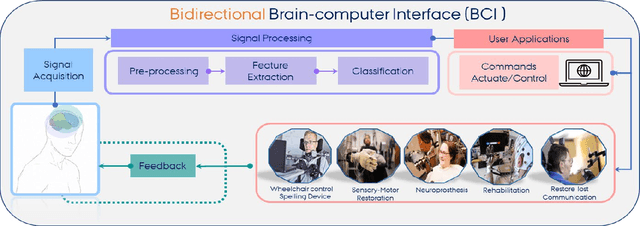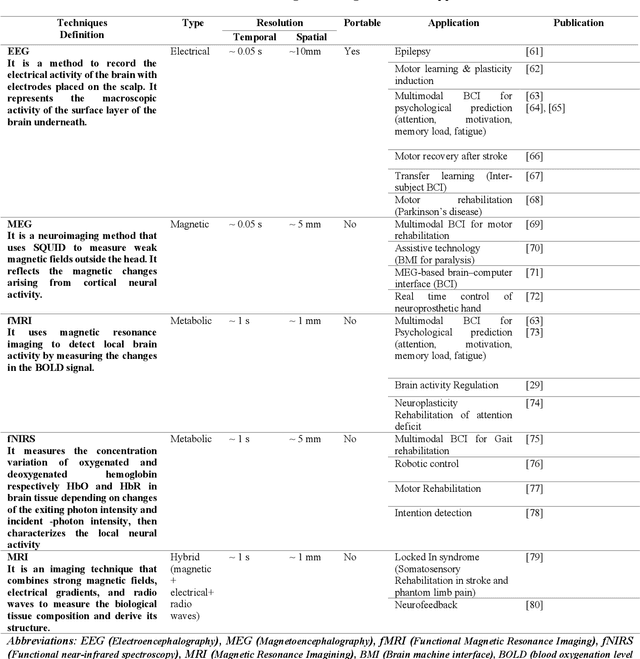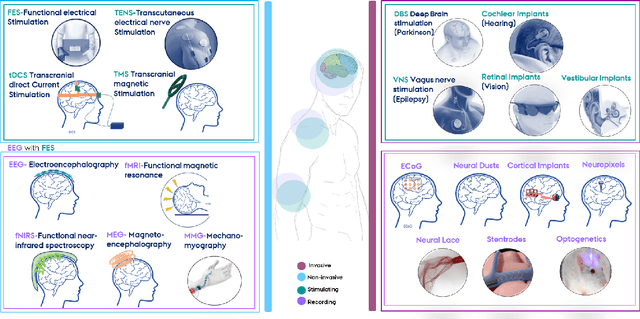Hoda Fares
In the realm of hybrid Brain: Human Brain and AI
Oct 07, 2022



Abstract:With the recent developments in neuroscience and engineering, it is now possible to record brain signals and decode them. Also, a growing number of stimulation methods have emerged to modulate and influence brain activity. Current brain-computer interface (BCI) technology is mainly on therapeutic outcomes, it already demonstrated its efficiency as assistive and rehabilitative technology for patients with severe motor impairments. Recently, artificial intelligence (AI) and machine learning (ML) technologies have been used to decode brain signals. Beyond this progress, combining AI with advanced BCIs in the form of implantable neurotechnologies grants new possibilities for the diagnosis, prediction, and treatment of neurological and psychiatric disorders. In this context, we envision the development of closed loop, intelligent, low-power, and miniaturized neural interfaces that will use brain inspired AI techniques with neuromorphic hardware to process the data from the brain. This will be referred to as Brain Inspired Brain Computer Interfaces (BI-BCIs). Such neural interfaces would offer access to deeper brain regions and better understanding for brain's functions and working mechanism, which improves BCIs operative stability and system's efficiency. On one hand, brain inspired AI algorithms represented by spiking neural networks (SNNs) would be used to interpret the multimodal neural signals in the BCI system. On the other hand, due to the ability of SNNs to capture rich dynamics of biological neurons and to represent and integrate different information dimensions such as time, frequency, and phase, it would be used to model and encode complex information processing in the brain and to provide feedback to the users. This paper provides an overview of the different methods to interface with the brain, presents future applications and discusses the merger of AI and BCIs.
 Add to Chrome
Add to Chrome Add to Firefox
Add to Firefox Add to Edge
Add to Edge